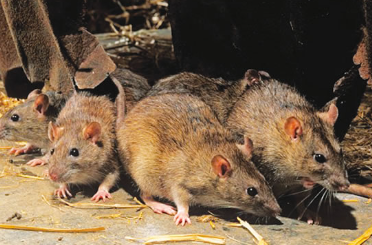Rising Concerns Over Lassa Fever Outbreaks
Lassa fever has gained attention due to a recent case in Iowa. This incident involved the death of a traveller returning from West Africa. The disease has been endemic in several West African countries. These include Benin, Côte d’Ivoire, Ghana, Guinea, Liberia, Mali, Nigeria, Sierra Leone, and Togo.
About Lassa Fever
Lassa fever is a viral haemorrhagic illness caused by the Lassa virus. It belongs to the Arenaviridae family. The primary reservoir for the virus is the Mastomys rat. Humans typically contract the virus through contaminated food or items. Secondary transmission can occur through bodily fluids.
Symptoms and Severity
Symptoms of Lassa fever often start with mild fever and malaise. After several days, severe symptoms may develop. These include headaches, sore throat, and muscle pain. Some patients may experience vomiting and abdominal pain. Approximately 80% of infections are mild or asymptomatic. However, severe cases can lead to organ failure. The case fatality rate is about 1%, but it can rise to 15-20% in hospitalised patients.
Diagnosis requires RT-PCR and ELISA tests. These tests must be conducted under stringent biosafety protocols. Limited resources in healthcare systems hinder diagnosis in endemic regions.
Risks for Vulnerable Populations
Pregnant women and infants face important risks from Lassa fever. Maternal mortality rates exceed 30% for infected pregnant women. The foetal death rate can be over 85%. Children under two may develop swollen baby syndrome, which has a higher fatality rate than adults.
Treatment Options
Supportive care is crucial for managing Lassa fever. This includes monitoring fluid balance and renal function. Pain relief and antiemetic medications are also important. The antiviral drug ribavirin is most effective when administered early.
Vaccine Development Challenges
Developing a vaccine for Lassa fever presents numerous challenges. The virus has at least five genetic lineages, complicating vaccine design. Trials require sufficient incidence rates, which are often only seen during outbreaks. Logistical issues, such as costs and cold-chain requirements, also hinder vaccine distribution.
Public Health Strategies
Effective public health strategies are essential for controlling Lassa fever. National leadership must prioritise preparedness and enhance diagnostic capabilities. Training healthcare professionals in infection control is vital. Community education on preventing rat-to-human transmission is necessary. Early treatment and isolation of suspected cases can reduce human-to-human transmission. Governments should mobilise resources for surveillance and collaborate with global health organisations.
Important Facts for Exams:
- Mastomys: Mastomys is a genus of rodents known as multimammate rats. They are primary reservoirs for the Lassa virus. Their role in disease transmission poses important public health challenges.
- RT-PCR: RT-PCR stands for reverse transcription polymerase chain reaction. This technique is crucial for diagnosing Lassa fever. It detects viral RNA in patient samples under strict biosafety conditions.
- Swollen Baby Syndrome: Swollen baby syndrome occurs in young children infected with Lassa fever. It is characterised by extensive swelling. This syndrome has a higher fatality rate compared to adults.
- Arenaviridae: Arenaviridae is a family of viruses that includes the Lassa virus. These viruses are often zoonotic. They can cause severe viral haemorrhagic fevers in humans.
Month: Current Affairs - November, 2024
Category: Science & Technology Current Affairs


